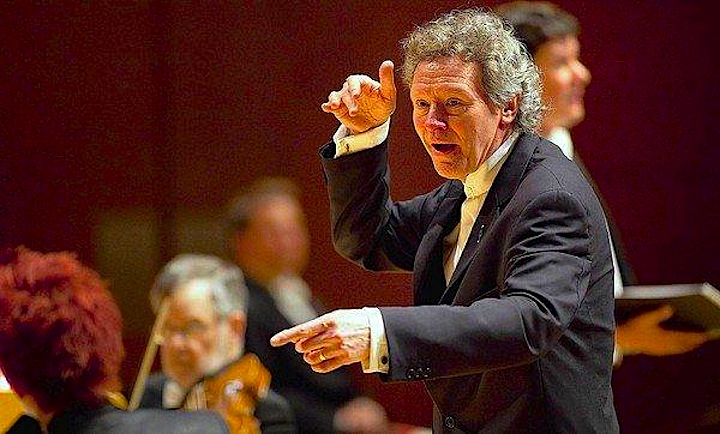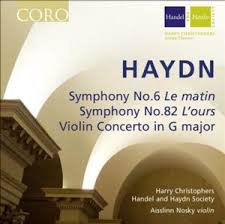
The best albums of the season are not necessarily the ones that arrive in a big promotional splash. The biggest pleasure of early fall for me has been an unheralded yet brilliant all-Haydn release by Boston’s venerable Handel and Haydn Society (it turns 200 in 2015) featuring its concertmaster, Toronto’s Aisslinn Nosky.
- Classical Music 101: What Does A Conductor Do? - June 17, 2019
- Classical Music 101 | What Does Period Instrument Mean? - May 6, 2019
- CLASSICAL MUSIC 101 | What Does It Mean To Be In Tune? - April 23, 2019
There are umpteen recordings of Joseph Haydn symphonies by all sorts of orchestras and ensembles, period and modern. But this one, using period performance practice and instruments led by artistic director Harry Christophers has it all: attention to detail, impeccable clarity, narrative sweep and, ultimately, an unstoppable life force.
 The three works on the album are bookended by symphonies: the early “Le matin” to start, and the late “L’ours” to close. The sweet, creamy cookie filling is the G Major Violin Concerto (Hob. VIIa/4).
The three works on the album are bookended by symphonies: the early “Le matin” to start, and the late “L’ours” to close. The sweet, creamy cookie filling is the G Major Violin Concerto (Hob. VIIa/4).
Instead of hiring a star soloist, the Handel and Haydn Society used its concertmaster of two years: longtime Tafelmusik violinist Nosky.
The period-performance movement doesn’t have solo megastars the way modern classical music has, because the work ethic and performance style is more about collaboration, collegiality and ensemble. But there are truly remarkable performers among the ranks of period players, and Nosky is without a doubt one of them.
Modern violinists object to the limited dynamic and tonal range of instruments set up in baroque or classical style (using different strings set at a different height on a different bridge, and played with a shorter, less rigid bow, for example). But it takes only a minute or two of listening to Nosky’s incredible control and technique to reinforce the old cliché about limits being inside the head, not in one’s hands.
The concerto is a thrill from beginning to end — highlighting the orchestra’s wonderful work as much as Nosky’s fine way with a solo line.
And Christophers makes sure that every note it heard, and worth paying attention to. I especially love the delicacy with which he treats the early symphony. Boston’s incredibly fine Symphony Hall — home to the Handel and Haydn Society for more than a century — gives the sound a seductive warmth.
The Handel and Haydn Society has been lucky to piggyback its recent recordings onto Christophers’ Coro label, which he founded for his British ensemble, The Sixteen. You can find all the details here.
+++
You can see Nosky in action tonight amongst her Tafelmusik colleagues at George Weston Hall in North York, in the last performance of the programme of pieces from the Austrian baroque (details here). On Saturday, she joins her I Furiosi baroque bandmates for a concert at Windermere United Church (details here).
And here is a moment of brilliant Bach from Nosky’s solo album from last year:
John Terauds
- Classical Music 101: What Does A Conductor Do? - June 17, 2019
- Classical Music 101 | What Does Period Instrument Mean? - May 6, 2019
- CLASSICAL MUSIC 101 | What Does It Mean To Be In Tune? - April 23, 2019



